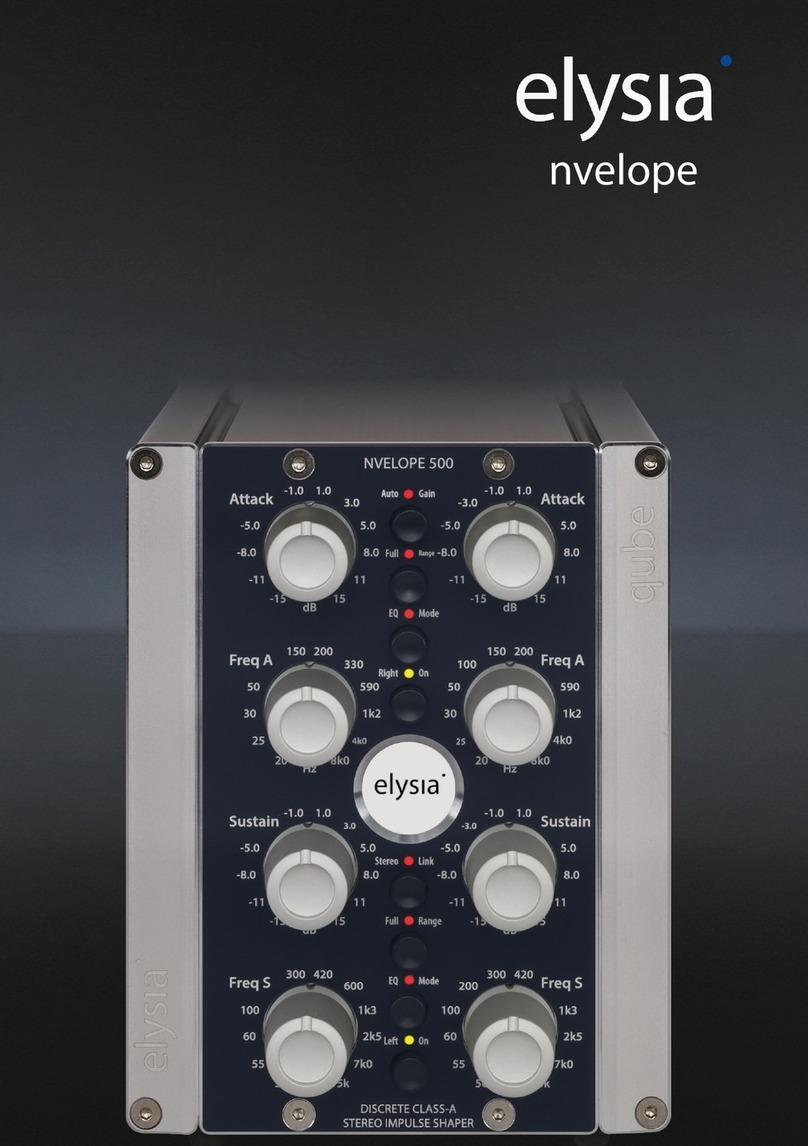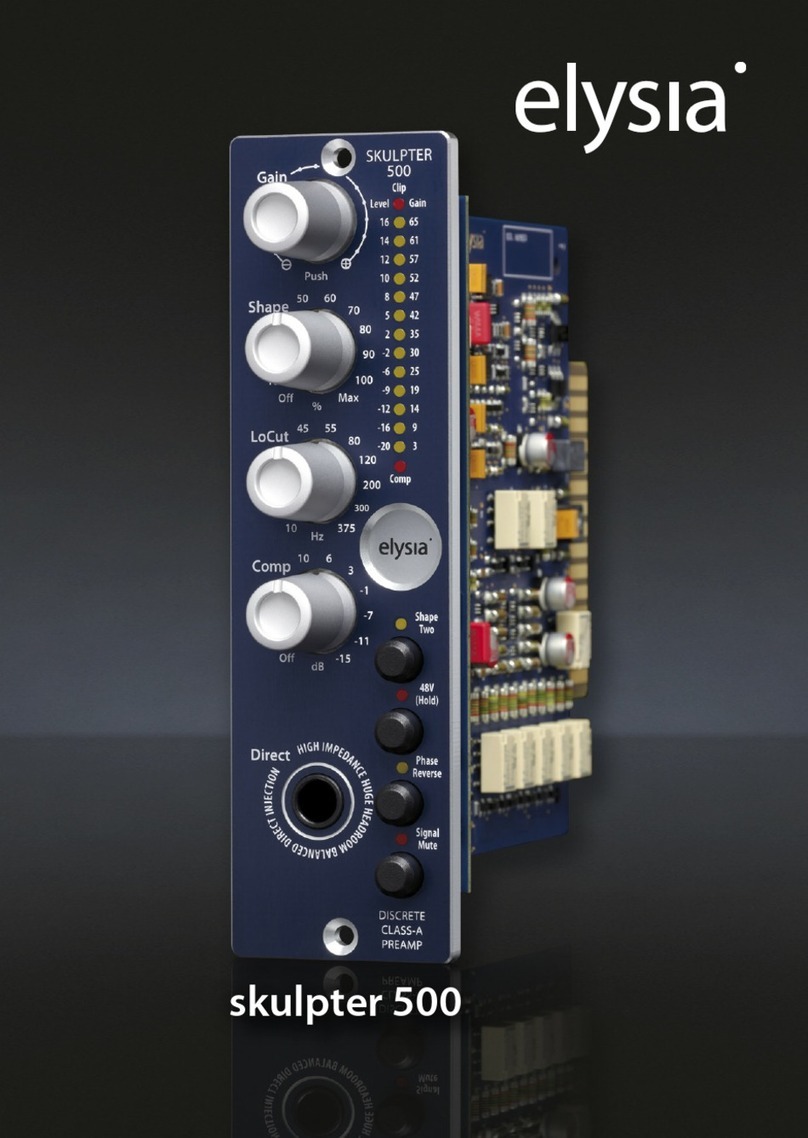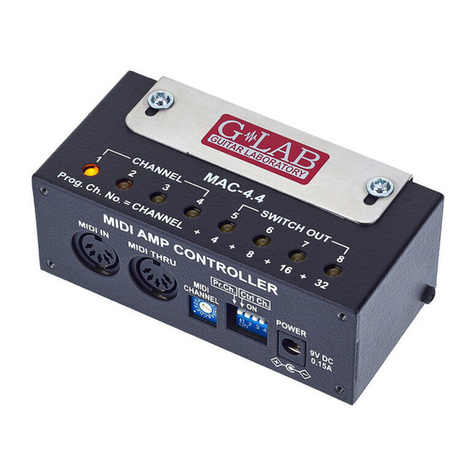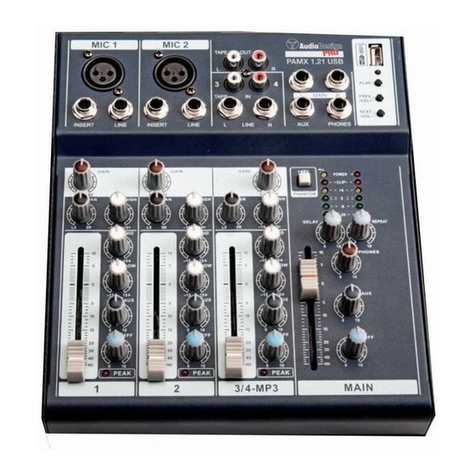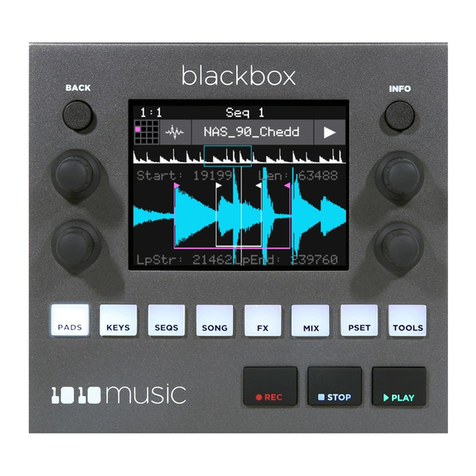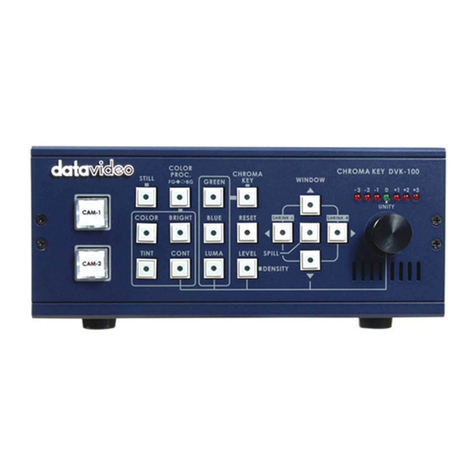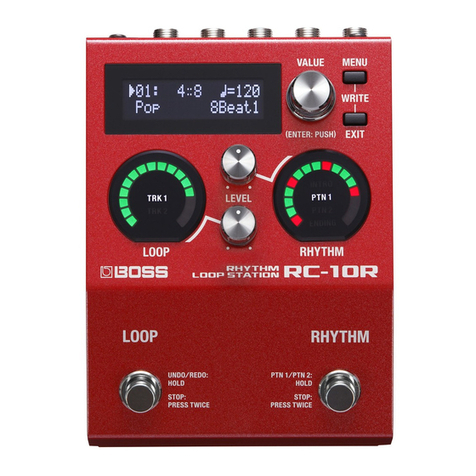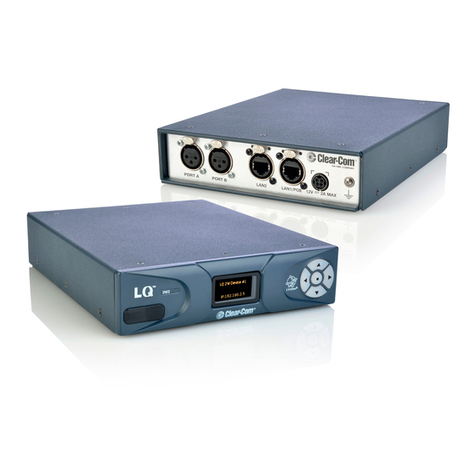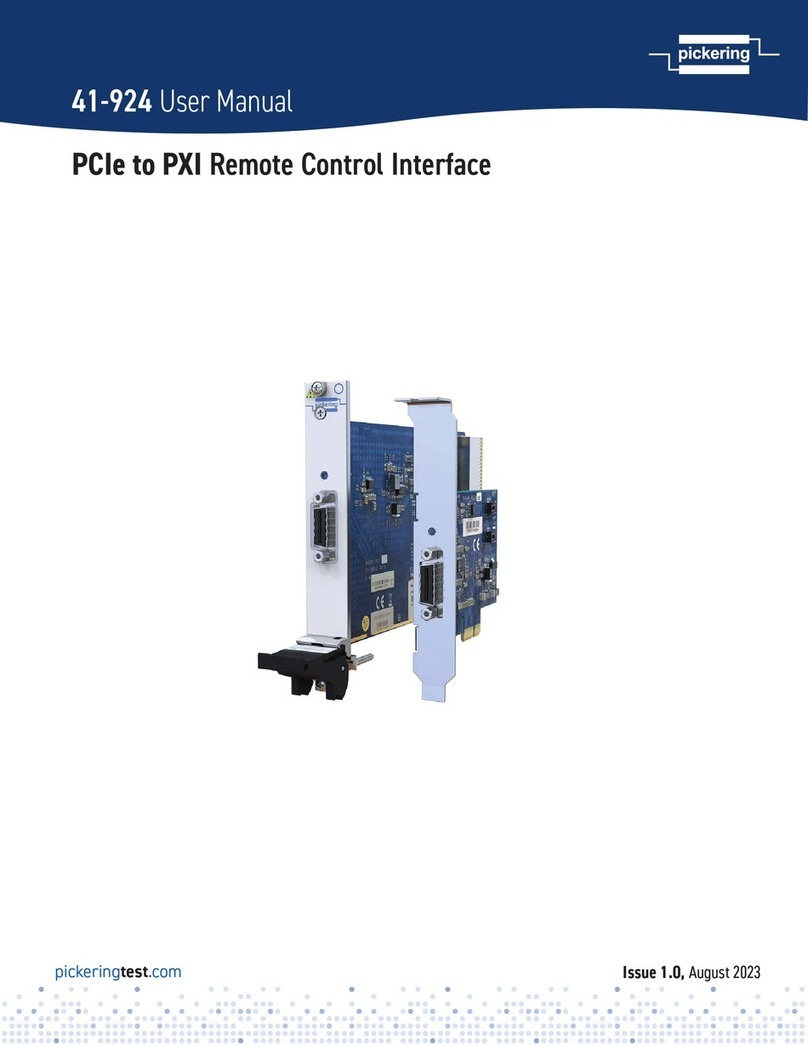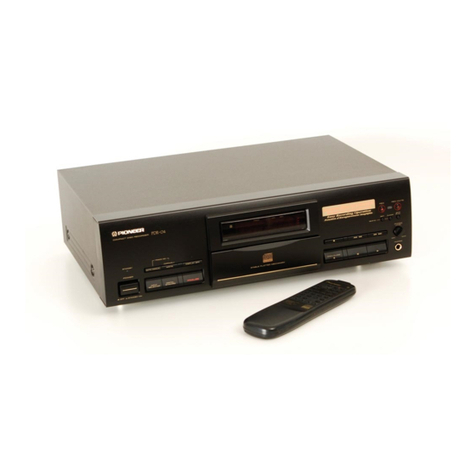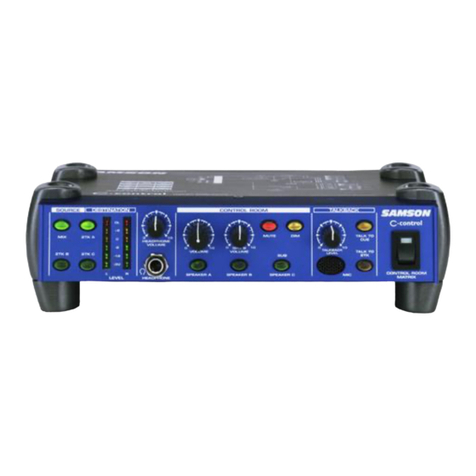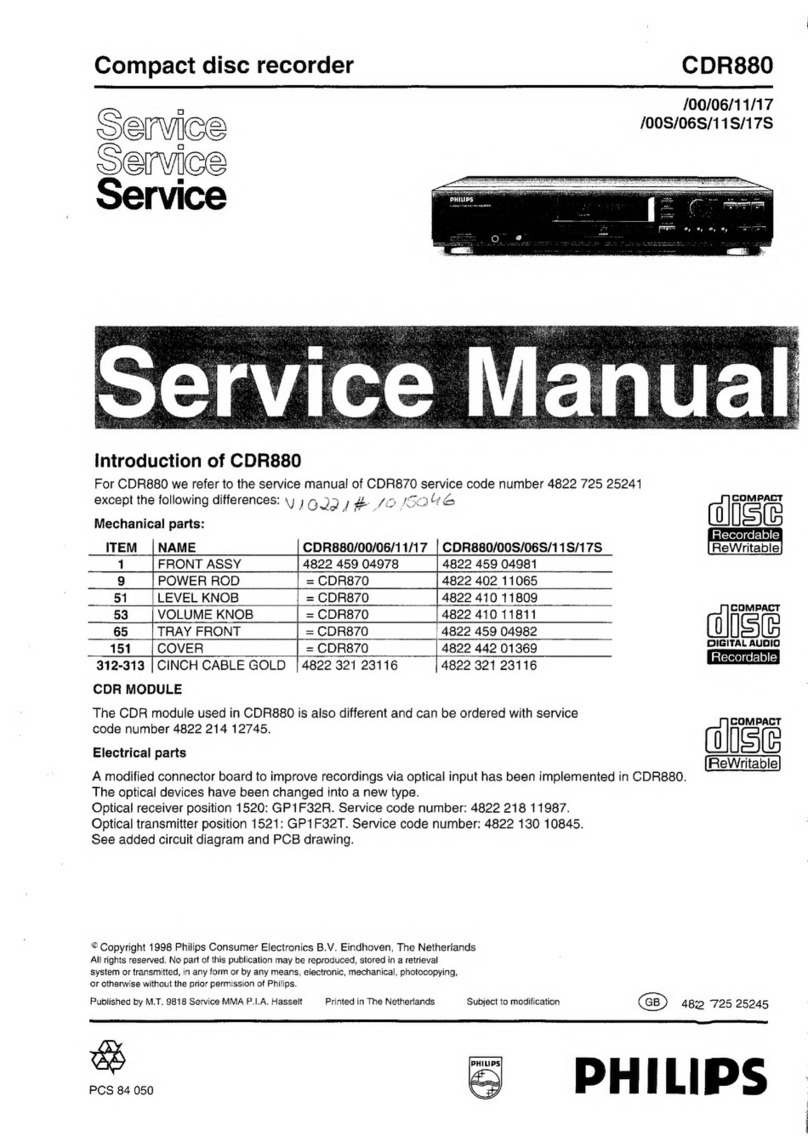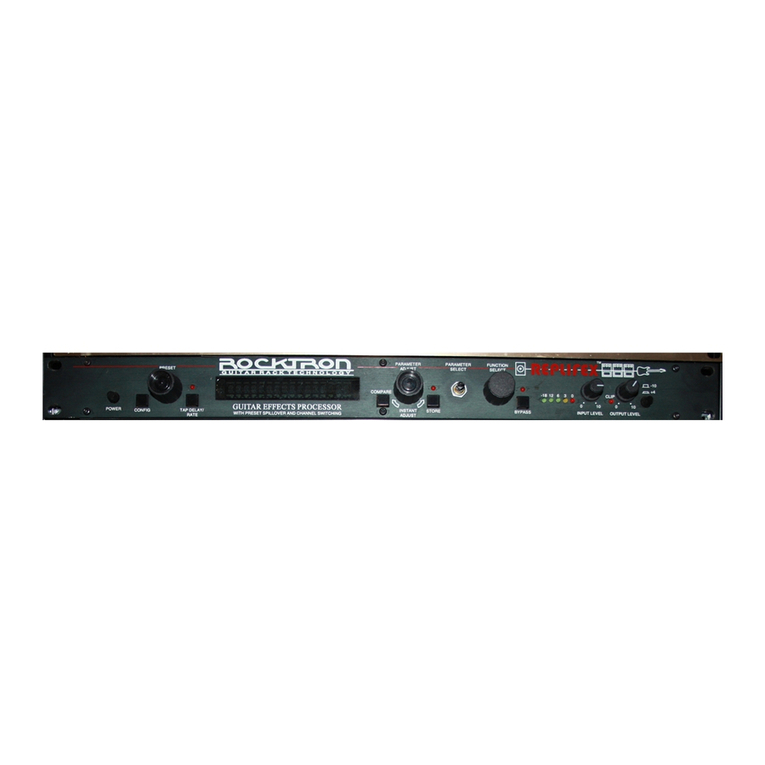elysia xpressor neo User manual

2
Welcome to Compressor Wonderland!
First of all, we would like to thank you for picking the xpressor neo as
your new dynamics tool - a very good choice indeed.
We believe this module is the most versatile stereo compressor available
in API’s 500 series format. With its many unique features taken from our
agship products, you not only get great compression, but an amount of
control on processing which has yet to be experienced elsewhere.
No matter if you want to set and forget or plunge deep into the secrets
of compression, the xpressor neo is for you. Its discrete audio path run-
ning in constant class-A mode provides a superior audio quality which
combines a clear and open sound with a good lot of punch.
Stereo buss compression, processing single signals, approaching dyna-
mics in creative ways – the xpressor neo shines in many dierent applica-
tions. Best of elysia? You got it!
Index
Controls .............................................................4
Connectors ..........................................................6
Auto Fast ............................................................8
Log Release..........................................................9
Warm Mode ........................................................10
Negative Ratios .....................................................11
Gain Reduction Limiter..............................................12
Technical Details ....................................................13
CE Conformity ......................................................13
Warranty Info .......................................................14
Legal Info...........................................................15
Deutsches Handbuch. . . . . . . . . . . . . . . . . . . . . . . . . . . . . . . . . . . . . . . . . . . . 16
Manuel Français.................................................30

3
Compatibility
The xpressor neo is a module to be installed into an API 500 series com-
patible rack frame (not included if not elysia qube). It needs the power
supply and the audio connectors provided by this frame and does not
function stand alone.
The current consumption is 125 milliamperes at +/- 16 volts DC. This is
actually more than many other 500 series modules consume as a result
of the discrete class-A design of the xpressor’s audio path.
Most API 500 compatible racks will meet this requirement without prob-
lems, but there might be a limitation of how many units can be installed
in a single rack. In case of doubt please check with the manufacturer of
your specic rack.
Installation
Just follow these easy steps to install the xpressor neo module:
1. Switch your API 500 series compatible rack o and disconnect the
power cable from mains.
2. Insert the module into two free slots of your rack. Make sure both PCB
connectors match with the rack connectors.
3. Gently push the module in place - do not use any extensive force here!
4. Tighten the front panel with four screws provided by your rack manu-
facturer.
5. Connect your XLR audio cables (see page 6 for more info) and apply
power to your rack or elysia qube.
And this is already it.
Have lots of fun with your xpressor neo!

4
Controls
Threshold (Thresh): The operating point of the compressor. If the
input level exceeds the value set with this controller, the compression
process will start.
Attack: The transient response of the compressor. It determines the
time the xpressor neo needs to reach 10 dB of gain reduction.
Release: The return phase of the compressor. It controls the period
of time between the input signal falling below the threshold and the
xpressor neo’s return to unity gain.
Ratio: The relation between the input level and the output level. As a
specialty of the xpressor neo, even negative ratios can be set here. (p. 11)
Hit It! Activates the xpressor neo (LED on) or deactivates it with a
hardwire bypass (GR meter remains active).

5
Warm Mode: The xpressor neo oers a second switchable sound
avor by altering its frequency spectrum, harmonics and transient
response. (p. 10)
Log Release (Log Rel): This alternative release curve follows a
logarithmic course instead of the standard linear progress and results in
a very gentle kind of compression. (p. 9)
Auto Fast: A semi-automation. This function shortens the attack time
automatically on fast and loud signal impulses and then returns to the
value set with the controller. (p. 8)
GRL LED: Indicates Gain Reduction Limiter activity. If this LED is on,
incoming signals will be held at the GR limit instead of being compressed
any further. (p. 12)
Gain Reduction Meter: The display for the gain reduction process.
Shows the amount of compression measured in dB as an visual support
for the acoustic events.
Sidechain Filter (SCF): A tunable low cut lter in the sidechain of the
xpressor neo avoids overcompression and pumping when there is a lot
of low end energy in the mix.
Gain Reduction Limiter (GRL): Restricts the control voltage. This
innovative limiter is not placed in the audio path as usual, but in the
control circuit of the compressor. (p. 12)
Gain: The make-up gain of the xpressor neo. This controller
compensates for the loss in gain caused by the compression process.
Mix: The direct and the compressed signal can be blended in any
desired relation by simply turning the mix controller. Onboard parallel
compression!

IN 2 IN 1
IN 1
OUT 1
OUT 1
IN 2
OUT 2
OUT 2
Power
- 16 Volt+ 16 Volt
elysia GmbH | Am Panneschopp 18 | 41334 Nettetal | Germany
18V/1A DC
Attention!
There may be 48V!
6
Connectors (elysia qube)
Audio inputs
(XLR and ¼” phone jack)
Audio outputs
(XLR and ¼” phone jack)
Power switch
Mono operation: Connect either input and output 1or 2- both will work
identically.
Stereo operation: Connect both inputs and outputs 1and 2- the choice
which channel is left and which is right is up to you.
Inputs (+4 dBu)
XLR balanced: Pin 1: ground Pin 2: hot (+) Pin 3: cold (-)
XLR unbalanced: Pin 1: ground Pin 2: hot (+) Pin 3: ground
Jack balanced: Sleeve: ground Tip: hot (+) Ring: cold (-)
Jack unbalanced: Sleeve: ground Tip: hot (+) Ring: ground
Outputs (+4 dBu)
XLR balanced: Pin 1: ground Pin 2: hot (+) Pin 3: ground
XLR unbalanced: Pin 1: ground Pin 2: hot (+) Pin 3: idle
Jack balanced: Sleeve: ground Tip: hot (+) Ring: ground
Jack unbalanced: Sleeve: ground Tip: hot (+) Ring: idle
Please note that in stereo operation
both channels are always processed by
one single control voltage generated
from a mix of both signals. This means
you should only compress adequate
stereo material like sum signals in this
mode - dissimilar signals like a bass
drum in one channel and a synth pad in
the other will not give you the intended
‘dual mono’results.

77
Precautions
WARNING: High Voltage
• Make sure to operate your API 500 series compatible rack at the specic
mains voltage of your country.
• Replace rack frame fuse with the same type and value only.
• Your rack frame must be connected to ground.
• Do not use a damaged power cord.
• Never place containers with liquid on the rack.
• Do not expose this device to rain or moisture.
• Do not use this device near water.
• Refer service to qualied service sta only.
CAUTION: Temperature
• Surfaces of the device may become hot during operation.
• Do not install this device near any heat source such as radiators, stoves
or other heat sources.
CAUTION: Connecting & Mounting
• Never connect to the output of a power amplier.
• Do not apply extensive force when installing this device.
• Use the device according to this manual only.
CAUTION: Humidity
• If this device is moved from a cold place to a warm room, condensation
can occur inside the device. To avoid damaging the unit please allow it
to reach room temperature before switching it on.

8
Auto Fast
The attack parameter is a crucial factor for the operation of a
compressor. Choosing the right time setting is very important,
but depending on the dynamic progress of the source material
this is a dicult task – no matter if single tracks or complete mixes are
processed.
If a very short attack time is chosen, the compressor is able to catch the
short peaks, but on the other hand the sustaining signal will also be pro-
cessed, which might result in audible distortion. Longer settings reduce
distortion signicantly, but then the compressor is too slow for catching
fast impulses.
This is where the Auto Fast function comes into play. If you set a longer
attack and engage the Auto Fast mode, the attack time will be shortened
automatically on fast and loud signal impulses. The compressor reduces
the signal quickly and prevents it from slipping through.
Then the attack time directly and automatically returns to its original
setting. In Auto Fast mode the compressor can be very fast, but only
when it is really needed.
Attack phase without Auto Fast Attack phase with Auto Fast
Output Level (dB)
Time (s) Time (s)
Output Level (dB)

9
Log Release
It is the time constants and especially the release parameter
that decide if the processing of a compressor is obvious or
unobtrusive to the ear. As it is dicult to achieve perfect results
for all kinds of dierent material with only one type of release curve, the
xpressor neo oers two dierent options to choose from: logarithmic
and linear.
It is characteristic of a logarithmic release that the time constant short-
ens when the amount of gain reduction increases. The advantage of this
behavior is that short and loud peaks (e.g. drums) have a fast release
time, while the remaining material is processed with a slower release.
Its smooth performance makes the Log Release especially useful for
mastering and stereo buss compression.
The linear mode, however, has a straight release prole, without the
slower tapering release characteristic of the Log mode. The linear mode
is a good choice for more aggressive dynamics control of dry signals,
and it is especially useful when you want to process signals which do not
have a long decay period.
Logarithmic release progress Linear release progress
Output Level (dB)
Time (s) Time (s)
Output Level (dB)

10
Warm Mode
This function is basically a slew rate limiter that reduces the
speed of the output amplier stages. This aects the frequency
spectrum, the harmonics and the transient response at the same
time.
Fast transients are slowed down a bit and the overall sound appears
more round and merged. As this function inuences the behavior of
the output stages, the eect it creates has an impact on the complete
processing results of the compressor.
This way the xpressor neo oers two dierent sound characters at the
push of a button: the powerful transparency of the discrete class-A
circuitry and the saturated richness of the Warm Mode.
Now the choice is really up to you: For transparent compression and an
even frequency response, just use the xpressor neo in standard mode.
For a little bit more fat and juicy sound, hit the Warm Mode button and
you are there!
Added total harmonic distortion Modied frequency response
THD+N (%)
Frequency (Hz) Frequency (Hz)
Output Level (dB)

11
Negative Ratios
Negative ratios – what exactly does this mean? To get a better
understanding of this function, it makes sense to realize what
the ratio control of a ‘normal’ compressor does:
•1:1 The signal remains linear, there is no compression process going
on.
•1:2 After crossing the threshold, an increase of 2 dB at the input will be
compressed to an increase of 1 dB at the output.
•1:∞ After crossing the threshold, the output signal is constantly held
at the threshold level without reacting to further increases at the
input (limiter).
At a negative ratio, the characteristic curve bends and returns back down
after crossing the threshold. The louder the input signal, the lower the
output signal – perfect for groovy compression eects.
To get a grip on the extreme ‘destruction’ this can cause, engaging the
Gain Reduction Limiter is just the right idea.
Standard compression ratio Negative compression ratio
Output Level (dB)
Input Level (dB) Input Level (dB)
Output Level (dB)

12
Gain Reduction Limiter
A specialty of the xpressor neo is the Gain Reduction Limiter for
the control voltage. This limiter is not placed in the audio path
where you would usually nd it, but in the control path of the
compressor instead.
When activated, it limits the control voltage according to the setting of
the GR Limit controller. This means: No matter how high the input level
might become – the amount of gain reduction will never exceed the val-
ue you have set.
Just think about the GRL as a second threshold controller: While the ‘reg-
ular’threshold controller tells the compressor when to start working, the
GRL controller tells it when to compress no further.
Loud parts in an arrangement can keep their dynamics, as they will not
be compressed beyond the limit of the Gain Reduction Limiter.
Note: This function of the xpressor neo is always active and does not
need a switch of its own.
GRL compression progress GRL input to output ratio
Output Level (dB)
Time (s) Input Level (dB)
Output Level (dB)
Attack phase
GRL phase
Release phase GRL phase

13
Technical Details
Frequency response: <10 Hz - 400 kHz (-3.0 dB)
THD+N @ 0 dBu, 20 Hz - 22 kHz, Mix 0 %: 0.003 %
THD+N @ 0 dBu, 20 Hz - 22 kHz, Mix 100 %: 0.007 %
THD+N @ +10 dBu, 20 Hz - 22 kHz, Mix 0 %: 0.003 %
THD+N @ +10 dBu, 20 Hz - 22 kHz, Mix 100 %: 0.02 %
Noise oor, 20 Hz - 20 kHz (A-weighted): -91 dBu
Dynamic range, 20 Hz - 22 kHz: 112 dB
Maximum input level: +21 dBu
Maximum output level: +21 dBu
Input impedance: 10 kOhm
Output impedance: 68 Ohm
Dimensions (elysia qube): (W x H x D) 4,09” x 5,23“ x 7,4“
Weight (elysia qube with 500 Series Module): 3,2 lbs
CE Conformity
The conformity of this device to the EU directives is conrmed
by the CE mark on the device.
This declaration becomes invalid by any unapproved modication of the
device.
Nettetal, 01.11.2022 - Ruben Tilgner

14
Warranty Info
The xpressor neo is covered by a limited warranty for a period of 2 years
against defects in parts and labor from the date of purchase. Natural
wear is not covered by this warranty. Repairs or replacements will not
extend the warranty period.
The warranty is given to the original purchaser only and is not transfer-
able. elysia will only give warranty on products purchased through au-
thorized elysia dealers. The warranty will only be valid in the country of
the original purchase unless otherwise pre-authorized by elysia.
All warranties become void when the product has been damaged by
misuse, accident, neglect, modication, tampering or unauthorized al-
teration by anyone other than elysia authorized service personnel.
The warrantor assumes no liability for property damage or any other inci-
dental or consequential damage whatsoever which may result from fail-
ure of this product. Any and all warrantees of merchantability and tness
implied by law are limited to the duration of the expressed warranty.
elysia will not pay for express or overnight freight service or pay for ship-
ments to locations outside Germany. All damages caused by transport
are not covered by this warranty.
This warranty gives you specic legal rights and you may also have other
rights which vary from state to state. Some of the above limitations may
not apply to you.

15
Legal Info
The information in this document is subject to change without further
notice and shall not be deemed as an obligation or warranty of any kind
by the manufacturer. No warranties, express or implied, are made with
regard to the quality, suitability or accuracy of this document.
The manufacturer reserves the right to change the contents of this docu-
ment and/or the associated products at any time without the provision
of prior notice. The manufacturer shall not be held liable for damages of
any kind arising from the use, or the inability to use this product or its
documentation.
The information in this document is subject to copyright. All rights, tech-
nical changes and errata are reserved. No part of this manual may be
reproduced or transmitted in any form or for any purpose without the
explicitly written permission of the copyright holders.
elysia and xpressor neo are registered trademarks of elysia GmbH. Other
product and brand names contained in this document are used for iden-
tication purposes only. All registered trademarks, product designations
or brand names used in this document are the property of their respec-
tive owners.
The product has been manufactured in compliance
with the RoHS directive. The purpose of this directive
of the European Union is the Restriction of Hazardous
Substances (RoHS) in electronic equipment in order to protect health
and nature. Dispose separately!
Version 1.2 © 2022 elysia GmbH

16
Willkommen im Kompressor-Wunderland!
Zunächst einmal möchten wir uns herzlich dafür bedanken, dass du dich
für den xpressor neo entschieden hast.
Dieser extrem vielseitige Stereokompressor steht vor allem für eins:
Dynamik-Bearbeitung Deluxe. Mit seinen von unseren Flaggschien
stammenden Sonderfeatures bietet er neben einer exzellenten
Kompression sehr weitreichende Kontrollfunktionen.
Ob man nur schnell die passende Einstellung nden oder sich tief in den
Geheimnissen der Kompression bewegen möchte: der xpressor neo ist
das richtige Werkzeug. Sein im permanenten Class-A Modus laufender
diskreter Audiopfad steht für einen transparenten Grundsound mit jeder
Menge Punch.
Der xpressor neo glänzt beim Komprimieren von Stereosummen eben-
so wie bei der Optimierung von Einzelsignalen und bei der kreativen
Dynamikbearbeitung. Best of elysia? Auf jeden Fall!
Inhalt
Bedienelemente ....................................................18
Anschlüsse .........................................................20
Auto Fast ...........................................................22
Log Release.........................................................23
Warm-Modus .......................................................24
Negative Ratios .....................................................25
Gain Reduction Limiter..............................................26
Technische Daten ...................................................27
CE Konformität .....................................................27
Garantie ............................................................28
Hinweise ...........................................................29
English Manual...................................................2
Manuel Français.................................................30

17
Kompatibilität
Das xpressor neo 500 Modul ist zur Installation in ein API 500 Series
kompatibles Rack (nicht im Lieferumfang enthalten außer beim elysia
qube) vorgesehen. Es ist auf dessen Netzteil und Audioanschlüsse ange-
wiesen und funktioniert nicht‚stand alone‘.
Der Strombedarf beträgt 125 Milliampere bei +/- 16 Volt DC. Begründet
durch das diskrete Class-A Design des Audiopfads liegt dieser Wert hö-
her als bei vielen anderen 500er-Modulen.
Die meisten API 500 kompatiblen Racks verkraften diese Anforderung
problemlos, allerdings lässt sich unter Umständen nur eine begrenzte
Anzahl an xpressor neo 500 Modulen installieren (im Zweifel bitte den
Hersteller des Racks konsultieren).
Installation
Die Installation des Moduls verläuft denkbar einfach:
1. Schalte dein API 500 Series kompatibles Rack aus und entferne das
Netzkabel.
2. Stecke das Modul in zwei freie Slots und richte die Kontakte der Plati-
nen genau auf die Steckleisten im Rack aus.
3. Drücke das Modul nun vorsichtig in die Steckleisten – dabei bitte keine
Gewalt anwenden!
4. Befestige die Frontplatte mit vier Schrauben aus dem Rackzubehör.
5. Verbinde die XLR-Audiokabel (mehr dazu auf Seite 20) und schließe
das Rack oder den elysia qube wieder an das Stromnetz an.
Und das war es auch schon.
Wir wünschen viel Spaß mit deinem xpressor neo 500!

18
Bedienelemente
Threshold (Thresh): der Arbeitspunkt des Kompressors. Überschreitet
der Eingangspegel den hier eingestelltenWert, setzt die Kompression ein.
Attack: das Einschwingverhalten des Kompressors. Bestimmt die Zeit,
die der xpressor neo benötigt, um 10 dB Gain Reduction zu erzeugen.
Release: die Rücklaufzeit des Kompressors. Regelt die Zeitspanne
zwischen der Unterschreitung des Thresholds und der Rückkehr auf den
Nominalpegel.
Ratio: das Verhältnis von Eingangs- zu Ausgangspegel.
Als besondere Spezialität des xpressor neo können auch negative Ratios
eingestellt werden. (S. 25)
Hit It! Aktiviert den xpressor neo (LED an) oder schaltet einen
Hardwire-Bypass (GR-Anzeige bleibt dabei aktiv).

19
Warm Mode: Durch eine Veränderung von Frequenzgang,
Harmonischen und Zeitempnden steht ein schaltbarer alternativer
Klangcharakter zur Verfügung. (S. 24)
Log Release (Log Rel): Diese zusätzliche Release-Kurve nimmt
anstelle des linearen einen logarithmischen Verlauf und erzeugt so eine
sehr unauällige Kompression. (S. 23)
Auto Fast: Durch diese Funktion wird die Attack-Zeit bei schnellen
und lauten Signalimpulsen automatisch verkürzt. (S. 22)
GRL LED: zeigt die Aktivität des Gain Reduction Limiters an. Leuchtet
die LED, werden die Signale auf dem GR Limit gehalten und nicht noch
stärker komprimiert. (S. 26)
Gain Reduction Meter: die Anzeige der Pegel-Reduktion.
Als optische Unterstützung der akustischen Ereignisse wird hier der
Kompressionsverlauf in dB angezeigt.
Sidechain Filter (SCF): Ein regelbarer Low Cut-Filter im Sidechain
vermeidet zu heftige Kompression und Pumpen bei Tracks mit starken
Pegeln in den tiefen Frequenzen.
Gain Reduction Limiter (GRL): begrenzt die Steuerspannung. Dieser
neuartige Limiter liegt nicht etwa wie üblich im Audiopfad, sondern im
Regelweg des Kompressors. (S. 26)
Gain: Die Aufholverstärkung des xpressor neo kompensiert den
Pegel, der zuvor durch den Kompressions-Prozess reduziert worden ist.
Mix: Mit dem Mix-Regler können direktes und komprimiertes Signal
im gewünschten Verhältnis zusammengefügt werden. Onboard Parallel-
kompression!

IN 2 IN 1
IN 1
OUT 1
OUT 1
IN 2
OUT 2
OUT 2
Power
- 16 Volt+ 16 Volt
elysia GmbH | Am Panneschopp 18 | 41334 Nettetal | Germany
18V/1A DC
Attention!
There may be 48V!
20
Anschlüsse (elysia qube)
Audio-Eingänge
(XLR und 6,3 mm Klinke)
Audio-Ausgänge
(XLR und 6,3 mm Klinke)
Einschalter
Mono-Betrieb: Verwende jeweils einen der beiden Ein- und Ausgänge
(1oder 2) – welchen Kanal du nimmst, steht dir frei.
Stereo-Betrieb: Verwende beide Ein- und Ausgänge (1und 2) – linken
und rechten Kanal kannst du dabei selber festlegen.
Eingänge (+4 dBu)
XLR symmetrisch: Pin 1: Masse Pin 2: heiß (+) Pin 3: kalt (-)
XLR unsymmetrisch: Pin 1: Masse Pin 2: heiß (+) Pin 3: Masse
Klinke symmetrisch: Sleeve: Masse Tip: heiß (+) Ring: kalt (-)
Klinke unsymmetrisch: Sleeve: Masse Tip: heiß (+) Ring: Masse
Ausgänge (+4 dBu)
XLR symmetrisch: Pin 1: Masse Pin 2: heiß (+) Pin 3: Masse
XLR unsymmetrisch: Pin 1: Masse Pin 2: heiß (+) Pin 3: frei
Klinke symmetrisch: Sleeve: Masse Tip: heiß (+) Ring: Masse
Klinke unsymmetrisch: Sleeve: Masse Tip: heiß (+) Ring: frei
Im Stereo-Betrieb werden beide Kanäle
mit einer einzigen Steuerspannung be-
arbeitet, die aus einem Mix der Signale
beider Kanäle generiert wird. Daher
sollte dann auch nur adäquates Stereo-
Material bearbeitet werden – unter-
schiedliche Signale wie eine Bass Drum
in einem Kanal und ein Synth-Pad im
anderen führen nicht zum gewünsch-
ten‚Dual Mono‘-Resultat.
Table of contents
Languages:
Other elysia Recording Equipment manuals

